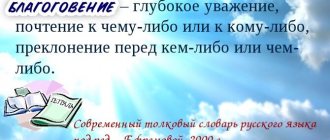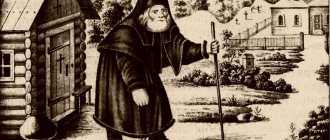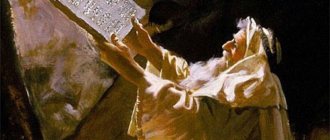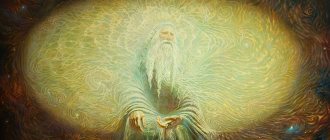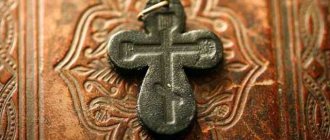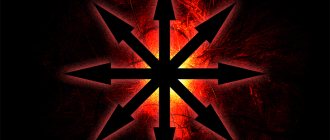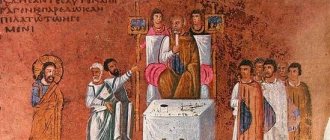Biblical tales have occupied the minds of scientists for centuries. Sacred texts are being studied, and during excavations in the Middle East, new artifacts are found that often ask more questions than they find answers. Stone tablets and the commandments inscribed on them are one of these mysteries.
What are the Tablets of the Covenant
This image came to us from the Bible and is firmly entrenched in culture and art. Here it is worth highlighting the semantic, historical, religious and linguistic aspects.
Origin of the word
This word, like many other religious terms, takes its roots from the Old Church Slavonic language and denotes cut boards - not necessarily stone. In Hebrew, this name sounds like “luchot ha-brit,” that is, “boards of the covenant.” In the language of the Bible, the last word can also mean "alliance" or "treaty." That is, the semantic emphasis is placed on the agreement that, according to Scripture, God concluded with the Jewish people.
Meaning of the concept
The term is most often used in a biblical context to describe the stone slabs inscribed with the commandments that God gave to the prophet Moses. But in a broader sense, the meaning of the word is a slab or board with text, that is, we are talking about writing material as such. And in ancient times they could also be wood and especially clay, if we are talking about the Middle Eastern region with its famous cuneiform writing.
Copper serpent
The next story about Moses in the Sistine Chapel is related to the Brazen Serpent. This is another test that God's chosen people underwent while traveling through the desert. When they once again began to grumble at Moses for leading them out of the beautiful country of Egypt, God sent snakes to attack them.
And the Lord sent poisonous serpents among the people, which bit the people, and a great multitude of the children of Israel died. And the people came to Moses and said: We have sinned in that we have spoken against the Lord and against you; pray to the Lord to remove the snakes from us. And Moses prayed for the people. And the Lord said to Moses: Make yourself a serpent and display it on a banner, and anyone who is bitten, looking at it, will live. And Moses made a copper serpent and put it on a banner, and when the serpent bit the man, he looked at the copper serpent and remained alive. Numbers 21:6-9
The copper serpent is depicted by Michelangelo in the corner fresco of the ceiling of the Sistine Chapel. Snake - often used as a symbol in art. Its meaning, however, is broader. In addition to sin, the snake is a symbol of wisdom (knowledge) as well as medicine. If we continue to follow the book of Numbers, then the next significant episode is Balaam's donkey. To do this we will have to return to Paris.
Biblical story
The shrine was first mentioned in the book of Exodus, the second part of the Pentateuch of Moses, or Torah, according to the tradition of Judaism.
History of appearance
The Torah, or Pentateuch of Moses, tells that the commandments were transmitted to the prophet from above on Mount Sinai. Thus, a covenant, or agreement, was concluded between the one God and the Jews.
However, the surrounding peoples continued to remain pagans, worship idols and maintain polytheism. A similar culture and related Semitic dialects simplified the penetration of foreign cults into the Jewish environment - this phenomenon is well described in the Old Testament. Just like the fact that Moses in anger broke not only the golden calf, but also the stone slabs with the commandments.
However, God gave them again - and now they were carefully preserved in the Ark of the Covenant. This special sarcophagus was portable and accompanied the nomadic Jews during their travels and military campaigns, and was then kept in the Holy of Holies of the First Temple, built by King Solomon in Jerusalem.
The essence and content of the inscriptions
According to Scripture, the 10 Commandments were carved on the stone - a summary of the divine law and rules of life that the chosen people must follow. However, there are 613 commandments in total - they are listed in the Torah.
Purpose and meaning of the relic
Tablets with commandments, carved with a divine sign in stone, became evidence of the union concluded by God with people. These regulations acquired the force of law for the Jews, who from that moment became God's chosen people. The Ark of the Covenant served as a shrine and was carefully guarded.
After the conquest of Canaan and the transition to settled life, the relic found a place in Solomon's temple. It became evidence of faith in one God in the context of the continued expansion of pagan cults and actual dual faith, when the position of Judaism in the Promised Land was not yet strong enough.
Moses received the tablets on Mount Sinai
To communicate with God, Moses climbed the mountain. This is nothing new for the traditions of the Arabian peoples. Even the ancestors of Abraham, who lived in Mesopotamia, communicated with the gods precisely at the heights.
A mountain is a place of conventional connection between heaven and earth, and heaven is the most distant place from our world, which is associated with the abode of God.
There were no mountains in Mesopotamia. But ziggurats were built there. That same Tower of Babel is an artificial mountain for communicating with God. Need I remind you how many times in the Bible people climb a mountain?
The mountain is the traditional place of communication between God and man.
- Jesus delivers the Sermon on the Mount
- Jerusalem Temple being built on a mountain
- Abraham nearly sacrifices his son on Mt.
- The Transfiguration of the Lord takes place during prayer on the mountain
- Noah's Ark finds refuge on the mountain, where Noah communicates with God
- Even Jesus Christ is eventually executed at Calvary, and this place becomes a cult place for Christians
So Moses acts within the framework of his own tradition - he communicates with God on Mount Sinai. Where exactly is it located? We don't have the slightest idea.
Jewish tradition did not preserve its location. There are two popular versions:
Jabal Musa - this place has been revered as Sinai since the 4th century. Of course, Christians of the 4th century knew no more about the location of Sinai than we do. Almost 20 centuries separated them from the date of the exodus!
Jabal el-Lawz is one of the modern versions of the location of Sinai. If the traditional option is the Sinai Peninsula, then in this case Sinai is moved to the Arabian Peninsula.
20
so many centuries have passed since they found a mountain that could be Sinai
Enthusiasts also cite other versions.
The Bible talks about the very circumstances of the presentation of the Tablets of the Covenant as follows:
“And the Lord said to Moses: Go up to Me on the mountain and be there; and I will give you the tablets of stone, and the law and the commandments, which I wrote for your teaching.
And Moses stood up with Joshua his servant, and Moses went up to the mountain of God, and said to the elders: Stay here until we return to you; behold, Aaron and Hur are with you; whoever has business, let him come to them.
And Moses went up into the mountain, and the cloud covered the mountain, and the glory of the Lord overshadowed Mount Sinai; and the cloud covered it for six days, and on the seventh day the Lord called to Moses from among the cloud.
The sight of the glory of the Lord on the top of the mountain was before the eyes of the people of Israel like a consuming fire. Moses entered the middle of the cloud and ascended the mountain; and Moses was on the mountain forty days and forty nights.”
(Ex. 24:12–18)
Finally, Moses created the Tablets:
“At that time the Lord said to me: hew out for yourself two tablets of stone, like the first, and go up to Me on the mountain, and make for yourself an ark of wood; and I will write on the tablets the words that were on the former tablets, which you broke; and put them in the ark.
And I made an ark of shittim wood, and hewed out two tablets of stone like the first, and went up to the mountain; and these two tables [were] in my hands.
And He wrote on the tablets, as was written before, the ten words which the Lord spoke to you on the mountain out of the midst of the fire on the day of the meeting, and the Lord gave them to me.
And I turned and came down from the mountain, and put the tablets in the ark which I had made to be there, as the Lord commanded me.”
(Deut. 10:1–5)
Interpretation
The Ten Commandments are also known as the Decalogue. Depending on the biblical translation, the wording may differ in detail, but the essence is the same:
I am your God and you shall have no other gods before Me.
The veneration of one God is prescribed. There is also a direct ban on worshiping the Creator and other deities at the same time - which was very important in those conditions.
Do not make yourself an idol, do not serve it or worship it.
Here there is a logical continuation of the first commandment - and the inadmissibility of alien cults in material terms. Idolatry is strictly prohibited. Nowadays, this has been embodied in a proverb that condemns over-indulgence in something and becoming an object of worship.
Don't take God's name in vain.
The interpretation of this prohibition varies. Judaism takes it literally - the name of God is taboo, and various epithets are used instead. In Hebrew, the term "Hashem" (literally "Name") is also used very often. Another understanding of the commandment is that a person should not disturb the Creator unnecessarily and strive to transfer responsibility for his actions to him.
Honor the Sabbath day.
In the Jewish calendar, Saturday, or Shabbat, is the seventh day of the week. It is believed that God created the world in six days, and on the seventh he only contemplated his creation. Likewise, the believer is instructed to rest on this day and devote it to prayer.
Honor your father and mother.
Respect and care for parents, traditional for all cultures, will be rewarded with longevity - so says this law.
Dont kill.
The biblical parable of Cain and Abel tells how death first entered the world of people - and it was fratricide committed out of ignorance. Here the value of the life of one's neighbor is affirmed.
Don't commit adultery.
Adultery is condemned. Husband and wife must remain faithful to each other, and violation of this in the Old Testament was severely punished, including the death penalty. However, limited polygamy was allowed - according to biblical texts, many Jewish patriarchs had concubines.
Don't steal.
After leaving Egyptian slavery, the Jews wandered through the desert in conditions of scarcity and limited resources. Theft under these conditions was rightly recognized as a grave sin.
Don't bear false witness.
The Old Testament emphasizes the importance of keeping oaths and being faithful to one's word. Before the appearance of the first kings of Israel, judges played the role of rulers for a long time. Therefore, in these conditions, the honesty of the witness was extremely important as an element of justice and social relations in general.
Do not covet your neighbor's wife or any of his property.
The commandment is sometimes interpreted as a general understanding of the prohibition of theft and adultery. But usually it is understood more simply - do not envy your neighbor and what he has.
Bible set out for family reading Moses the Lawgiver
And the Lord said to Moses: Go up to Me on the mountain and be there; and I will give you the tablets of stone, and the law and the commandments, which I wrote to teach them. Ref. 24:12
In preparing and educating His people for their purpose, the Lord deigned to instill in them concepts about the responsibilities of their life in society.
Before Moses became the leader and leader of the children of Israel, their tribes and families were governed by the authority of the eldest in the clan, or patriarch. Now Moses, due to his God-determined calling, had to concentrate all power in his own person. He was at the same time a prophet
(in the meaning of a righteous person who dedicated himself to serving God and His economy [1]), and
a teacher
, and
a leader of
the army, and
a legislator
, and
a judge
over the fulfillment of God’s statutes.
And when his father-in-law Jethro arrived on the way to Moses, accompanying his wife and children, he was amazed at the number and variety of his son-in-law’s deeds. “You will torment both yourself and this people who are with you,” Jethro said to Moses, “for this matter is too difficult for you: you alone cannot correct it; listen therefore to my words; I will give you advice, and God will be with you: be a mediator for the people before God and present their affairs to God; teach them the statutes and laws of God, show them His path, which they should follow, and the things that they should do; Look for yourself from among all the people capable people, those who fear God, truthful people who hate self-interest, and place them over it; let them judge the people at all times and report to you about every important matter, and judge all small matters themselves: and it will be easier for you, and they will bear the burden with you .
And Moses listened to the words of his father-in-law and did everything that he told him.”
(Ex. 18, 18–22, 24)
Thus, although the highest power was retained by Moses, it came from God Himself, and Moses was only a mediator between God and the people. The Israelis learned gradually to submit to a higher authority and became accustomed to complete obedience, which was required in order to accept the divinely revealed legislation of Sinai in the future.
The Jews camped in the desert at the foot of Mount Sinai in the third month after their exodus from Egypt. “Moses went up to God on the mountain, and the Lord called to him from the mountain, saying: Thus speak to the house of Jacob and tell the children of Israel: you have seen what I did to the Egyptians, and how I carried you as if on eagles’ wings, and brought you to To yourself; Therefore, if you will obey My voice and keep My covenant, then you will be My inheritance from all nations, for the whole earth is Mine.
And Moses came and called the elders of the people and set before them all these words which the Lord had commanded him. And all the people answered with one voice, saying: Let us do all that the Lord hath spoken, and let us obey. And Moses reported the words of the people to the Lord.
And the Lord said to Moses: Behold, I will come to you in a thick cloud, so that the people will hear how I speak to you and believe you forever. And the Lord said to Moses: Go to the people and sanctify them today and tomorrow; let them wash their clothes, that they may be ready for the third day: for on the third day the Lord will descend in the sight of all the people upon Mount Sinai; and draw a line for the people on all sides and say: beware of going up the mountain and touching its foot; anyone who touches the mountain will be put to death.
On the third day, when morning came, there were thunder and lightning, and a thick cloud over Mount (Sinai), and the sound of a trumpet was very loud; and all the people that were in the camp trembled. And Moses brought the people out of the camp to meet God, and they stood at the foot of the mountain.”
“Mount Sinai was all smoking because the Lord had descended on it in fire; and smoke rose from it like smoke from a furnace, and the whole mountain shook greatly. Moses spoke, and God answered him with a voice…” and confirmed that the people would not rush to ascend to the Lord, so that the Lord would not strike them.
“And Moses went down to the people and told them.”
(Ex. 19, 3–5, 7–12, 16–19, 21, 25)
“And God spoke (to Moses) all these words, saying:
I am the Lord your God, who brought you out of the land of Egypt, out of the house of slavery; Let you have no other gods before Me.
You shall not make for yourself an idol or any likeness of anything that is in heaven above, or that is on the earth below, or that is in the water under the earth; You shall not bow down to them or serve them, for I am the Lord your God, a jealous God, visiting the iniquity of the fathers on the children to the third and fourth generation of those who hate Me, and showing mercy to a thousand generations of those who love Me and keep My commandments.
Do not take the name of the Lord your God in vain, for the Lord will not leave without punishment the one who takes His name in vain.
Remember the Sabbath day to keep it holy; six days thou shalt work and do all thy work in them, but the seventh day is the Sabbath of the Lord thy God: on it thou shalt not do any work, neither thou, nor thy son, nor thy daughter, nor thy manservant, nor thy maidservant, nor (thy neither your donkey, nor any of your livestock, nor the stranger who is within your gates; For in six days the Lord created heaven and earth, the sea and everything in them, and rested on the seventh day; Therefore the Lord blessed the Sabbath day and sanctified it.
Honor your father and your mother, that it may go well with you and that you may prolong your days in the land that the Lord your God is giving you.
Dont kill.
Don't commit adultery.
Don't steal.
Do not bear false witness against your neighbor.
Thou shalt not covet thy neighbor's house; You shall not covet your neighbor’s wife, nor his field, nor his manservant, nor his maidservant, nor his ox, nor his donkey, nor any of his livestock, nor anything that is your neighbor’s.”
(Ex. 20, 1–17)
With these commandments, the Lord outlined the foundations of the moral law, which was to govern humanity from then on, first in the person of His chosen people, and serve as a preparation for them to perceive the final highest moral law, which was to be brought into the world by the Revelation of the incarnate God Himself.
Hearing the sound of a trumpet, seeing thunder and flames and a smoking mountain, “the people retreated and stood afar off.”
“And they said to Moses: Speak to us, and we will listen, but let not God speak to us, lest we die. And Moses said to the people, Fear not; God came to you to test you and to put the fear of Him before your face, so that you would not sin. And all the people stood in the distance...
And the Lord said to Moses: Go up to Me on the mountain and be there; and I will give you the tablets of stone, and the law and the commandments, which I wrote to teach them. And Moses stood up with Joshua his servant, and Moses went up to the mountain of God, and said to the elders: Stay here until we return to you; behold, Aaron and Hur are with you; whoever has business, let him come to them.
And Moses went up into the mountain, and a cloud covered the mountain, and the glory of the Lord overshadowed Mount Sinai; and the cloud covered it for six days, and on the seventh day the Lord called to Moses out of the midst of the cloud. And the sight of the glory of the Lord on the top of the mountain was before the eyes of the children of Israel like a consuming fire. Moses entered the midst of the cloud and ascended the mountain; and Moses was on the mountain forty days and forty nights.”
(Ex. 20, 18–21; 24, 12–18)
At this time, the Lord informed His visionary Moses of an addition to the legislation that he was to follow to govern the people of Israel.
This legislation contained the most necessary rules of faith, laws of morality, external rites of worship of God, as well as those political and civil institutions that were supposed to isolate the people of Israel from all other peoples of the then world.
Moses received Revelation from God partly during the forty days that he stayed on the mountain, partly a little later. And the laws taught in this Revelation, although they did not rise to the level of the Revelation of the Gospel New Testament, adapting to the then low understanding of the “stiff-necked” Jews, nevertheless they stood like heaven from earth and surpassed all the institutions of the most enlightened peoples in antiquity.
They were based on the control of people by God Himself and the fact that all earthly power had to be in complete subordination to His supreme power in all respects. In this way, the inextricable communication of God with man, God of the Spirit, One God, God the Ruler over all His creatures, was to continue. According to His good will, the Lord made the Israelites His chosen people among other people. But this election does not violate His justice: He rewards or punishes each person according to his deserts - due to the freedom of choice between good and evil, which He has endowed man with.
Worship of God, according to the Law of Moses, is associated with its external manifestations. Most importantly, it must be internal, expressed through prayer, as Moses himself served as an example. But since man consists of spirit and flesh, worship of God must also have its outward expression, namely: studying the Law of God, teaching it to one’s children, constant conformity with it in all matters, participation in public worship.
The patriarchs erected altars, and Moses, at the command of God, built a temple where sacrifices and prayers were to be performed. This temple was in the form of a tent (originally mobile) and was called the tabernacle of meeting or meeting. It was divided by a veil into the sanctuary and the holy of holies. In the Holy of Holies was the Ark of the Covenant, or box of tablets. There also had to be persons who dedicated themselves to serving God: Aaron and the Levites (from the tribe of Levi) were chosen to this rank.
New legislation establishes holidays. Some days should be devoted to prayer and remembrance of solemn events in the life of the people, namely: Easter
- memory of the exodus from Egypt;
the feast of Pentecost
- the memory of the Sinai legislation;
On the day of atonement,
the high priest confessed the sins of all the people and, with the blood of a sacrificed goat, entered the Holy of Holies and sprinkled it on the atonement, thereby cleansing the sins of the people.
In addition to these holidays, the Jews celebrated every Sabbath, the beginning of each month and year, the seventh or sabbath year, when they were to free slaves, forgive each other's debts, and leave harvests to the poor, and the fiftieth or jubilee year, when they were to repay the former. owners of estates mortgaged or sold by them.
At the same time, the spiritual mood had to be in full accordance with the external rites of worship of God, since external worship of God must have its source in the human heart.
By instructing to “love your neighbor as yourself,” Moses points to man’s duties to his neighbor.
The Law of Moses places a high value on the freedom of the human soul, and although it does not destroy slavery, which was rooted in the customs of the people of that time, it greatly facilitates and softens it and makes it different from what it was among the pagans and even among the most enlightened later peoples. For example, the law of Moses limits the right of life and death of a master over his slave and defines it in such a way that “whoever strikes a man so that he dies shall be put to death” (Ex. 21:12). Whoever hits his servant in the eye (or tooth) and injures him, let him go free for the eye (or tooth) (see Ex. 21:26-27).
Some other customs, the abolition of which would have been premature and inapplicable given the then low degree of their spiritual development, were nevertheless significantly softened by Moses. For people who committed other crimes for which they were subject to revenge by the relatives of the victim, “cities of refuge” were opened, where they were protected from avengers.
The Sabbath rest is instituted for everyone without distinction, both free and slaves and aliens. “Do not oppress the stranger and do not oppress him, for you yourselves were strangers in the land of Egypt,” reminds the Lord through Moses (Ex. 22:21).
As for idolatry, which in those countries reached blatant manifestations and was not only an insult to God, but also a betrayal of the mission of Israel and even a denial of the very spirit of the nation, it was punishable by death, like all fortune-telling and sorcery.
Moses insisted in particular on the protection of laws establishing the marriage union as the basis of the family and society, although he allowed divorce in some cases - contrary to the indissolubility of marriage. Moses protects everyone's property with strict and fair laws.
The land tax (a tenth of the income) was determined by him in favor of the clergy, deprived of the right to own land. A family that has been deprived of its right to income from the land due to the debt of its father, this right is returned in the Sabbath year, so that the children are protected from complete ruin by their fathers.
Nor did the father, as was later the case with the Romans, have the right of life and death over his children. The poor were provided with obligatory protection through alms in their favor. Kind treatment is prescribed even in relation to animals.
All these laws of Moses, although they do not serve as the highest expression of morality, when compared with the law of Christ, Who bequeathed: “Love your enemies, bless those who curse you, do good to those who hate you, and pray for those who oppress you and persecute you” (Matthew 5:38— 44), but have the goal of correcting the people and preparing them to perceive the truth in its highest, final meaning and at the same time sanctify the ancient union of Israel with their God.
Thus, the Jews, emerging from Egypt, where they had long been under the harmful influence of idolaters, were now able to correct themselves and rise spiritually, guided by God Himself, in the presence of countless miracles performed by Moses, the mediator between them and God. Meanwhile, they were still not solid and capable of falling during trials and in moments of faint-hearted fear.
So, while Moses, secluded on the top of Sinai, prayed, listened to the suggestions of God - “talked with God,” the frivolous and rude people became impatient with his absence. He forgot about all the great blessings of God that had been upon him; forgot their own obligations and, having gathered in a crowd, surrounded Aaron and demanded of him that he stand up and make them a god who would go before them, for, they said, “with this man, with Moses, who brought us out of the land of Egypt “We don’t know what happened.”
Feeling powerless in front of the riotous crowd, Aaron, in order not to give in to their insane demands, tried to make it difficult to fulfill them and told the people: “Take out the gold earrings that are in the ears of your wives, your sons and your daughters, and bring them to me” to make them a cast calf. But the Jews did not back down even before such a donation and brought everything Aaron demanded. Then he built them a golden calf in imitation of the Egyptian god, the bull Apis, and the people bowed before him, exclaiming: “Behold your god, O Israel, who brought you out of the land of Egypt!” And the next day, in his honor, they “brought burnt offerings and brought peace offerings” and began to hold a feast. “And the Lord said to Moses: Hasten to leave here, for your people, whom you brought out of the land of Egypt, have become corrupt; They quickly turned away from the way that I commanded them: they made themselves a molten calf and worshiped it, and offered sacrifices to it and said, “This is your god, O Israel, who brought you up out of the land of Egypt.”
“And the Lord said to Moses: I see this people, and behold, they are a stiff-necked people; Therefore leave Me, that My wrath may burn against them, and I may destroy them, and make of you a great nation. But Moses began to beg the Lord his God, and said: Let not Your wrath, O Lord, be kindled against Your people, whom You brought out of the land of Egypt with great power and with a strong hand, lest the Egyptians say: He brought them out to destruction in order to kill them. in the mountains and destroy them from the face of the earth; turn away Your fiery anger and cancel the destruction of Your people. And the Lord abolished the evil which He had said He would bring upon His people.
And Moses turned and came down from the mountain; in his hand were two tablets of revelation (stone), on which it was written on both sides: on both sides it was written; the tablets were the work of God, and the writings inscribed on the tablets were the writings of God.
When he (Moses) approached the camp and saw the calf and the dancing, then he was inflamed with anger and threw the tablets out of his hands and smashed them under the mountain; and he took the calf which they had made, and burned it with fire, and ground it to dust, and scattered it on the water, and gave it to the children of Israel to drink.”
(Ex. 32, 1, 4, 7–12, 14–16, 19–20)
When Aaron, in response to the reproaches expressed to him by Moses for his cowardly compliance with the people, objected that he did not have the strength to resist the entire rebellious people, then “Moses saw that these were an unbridled people, for Aaron allowed them to become unbridled, to shame before their enemies.”
“And Moses stood at the gate of the camp and said, “If anyone belongs to the Lord, come to me!” And all the sons of Levi gathered to him. And he said to them, Thus says the Lord God of Israel: Put every man his sword on his thigh, go through the camp from gate to gate and back, and kill every man his brother, every man his friend, every man his neighbor. And the children of Levi did according to the word of Moses: and about three thousand of the people fell that day.
The next day Moses said to the people, “You have committed a great sin; Therefore I will ascend to the Lord, lest I may blot out your sin. And Moses returned to the Lord and said: O Lord! This people committed a great sin: they made themselves a golden god; forgive them their sin, and if not, then blot me out of Your book, in which You wrote. The Lord said to Moses: I will blot out the one who sinned against Me from My book; Therefore, go (descend), lead this people where I told you. And I will send My angel before you, and I will drive out the Canaanites, the Amorites, the Hittites, the Perizzites, the Hivites, and the Jebusites, and he will bring you into a land flowing with milk and honey; for I myself will not go among you, lest I destroy you on the way, for you are a stiff-necked people. The people, having heard this menacing word, wept, and no one put on their ornaments.
Moses took and pitched a tent for himself outside the camp, and called it the tabernacle of meeting; and everyone who sought the Lord came to the tabernacle of meeting, which was outside the camp. When Moses entered the tabernacle, then a pillar of cloud descended and stood at the entrance to the tabernacle, and the Lord spoke to Moses.
And all the people saw the pillar of cloud standing at the entrance of the tabernacle; and all the people stood up and worshiped, every one at the door of his tent. And the Lord spoke to Moses face to face, as one speaks to his friend.”
(Ex. 32, 25–28, 30–34; 33, 2–4, 7, 9–11)
And then Moses dared to ask the Lord to show him His favor and His glory. “And the Lord said to Moses: I will make all my glory known before you, and I will proclaim the name of Jehovah before you, and I will have mercy on whom I will have mercy, and I will have mercy on whom I will have mercy. And then He said, “You cannot see My face, for man cannot see Me and live.”
“And the Lord said: This is my place; stand on this rock; When My glory passes by, I will put you in a cleft of the rock and cover you with My hand until I pass by; and when I remove My hand, you will see Me from behind, but My face will not be visible to you.
And the Lord said to Moses: Hew out for yourself two tablets of stone, like the first ones, and go up to Me on the mountain, and I will write on these tablets the words that were on the first tablets that you broke.
And Moses hewed two tablets of stone, similar to the first ones, and, rising early in the morning, went up to Mount Sinai, as the Lord commanded him; and took the two tablets of stone in his hands. And the Lord came down in the cloud, and stood there near him, and proclaimed the name of Jehovah. And the Lord passed before him and proclaimed: The Lord, the Lord, a gracious and merciful God, long-suffering and abounding in mercy and truth, preserving righteousness and showing mercy to thousands, forgiving iniquity and crime and sin, but not leaving it unpunished, punishing the iniquity of the fathers in children and in children of children up to the third and fourth generation. Moses immediately fell to the ground and worshiped God.
And Moses stayed there with the Lord for forty days and forty nights, neither eating bread nor drinking water; and Moses wrote on the tablets the words of the covenant, the ten books.
When Moses descended from Mount Sinai, and the two tablets of revelation were in Moses’ hand as he descended from the mountain, Moses did not know that his face began to shine with rays because God was speaking to him. And Aaron and all the children of Israel saw Moses, and behold, his face was shining, and they were afraid to come near him. And Moses called them, and Aaron and all the leaders of the congregation came to him, and Moses talked with them. After this all the children of Israel approached him, and he commanded them everything that the Lord had spoken to him on Mount Sinai. And when Moses stopped speaking to them, he put a veil over his face.”
(Ex. 33, 19–23; 34, 1–4, 5–8, 28–33)
When Moses conveyed to the people further regulations that he had received from God on Mount Sinai, he began to carry them out. First of all, he took care of the construction of a mobile temple, in which from then on public worship was to be performed.
And then began to come to him “all whose hearts were drawn to him, and all whose spirit was disposed, and brought offerings to the Lord for the building of the tabernacle of meeting and for all its needs and for all the sacred garments.”
“And Moses said to the children of Israel, “See, the Lord appointed precisely Bezaleel, the son of Uriah, the son of Hur, from the tribe of Judah, and filled him with the Spirit of God, wisdom, understanding, knowledge and all skill; and the ability to teach others was put into his heart, both by him and by Aholiab, of the tribe of Dan. And Bezaleel and Aholiab and all the wise in heart, to whom the Lord had given wisdom and understanding, began to work, so that they could do all the work needed for the sanctuary, as the Lord commanded.
As the Lord commanded, so the children of Israel did all these works. And Moses saw all their work. And Moses blessed them. And the Lord spake unto Moses, saying, In the first month, on the first day of the month, thou shalt pitch the tabernacle of the congregation, and shalt put the ark of the testimony in it, and cover the ark with the veil; and clothe Aaron with holy garments, and anoint him, and sanctify him, that he may be a priest unto me.
And Moses did all that the Lord commanded him, and so he did. In the first month of the second year after their exodus from Egypt, on the first day of the month the tabernacle was erected. And (Moses) set up a court around the tabernacle and the altar, and hung a curtain on the gate of the court. And so Moses finished the job. And the cloud covered the tabernacle of meeting, and the glory of the Lord filled the tabernacle; and Moses could not enter into the tabernacle of meeting, because a cloud overshadowed it, and the glory of the Lord filled the tabernacle. When the cloud lifted from the tabernacle, then the children of Israel set out on their entire journey; But if the cloud did not rise, then they did not set out until it was lifted: for the cloud of the Lord stood over the tabernacle by day, and fire was in it by night in the presence of all the house of Israel throughout their journey.”
(Ex. 35, 21, 30–31, 34; 36, 1; 39, 42–43; 40, 1–3, 13, 16–17, 33–38)
Location
Initially, the Ark of the Covenant with the relic was kept in the Tabernacle of Meeting - a special tent, a kind of camp temple, which was built during stays. Later the Ark was located in the First Temple. But where the tablets of Moses are now kept is unknown. After the destruction of the Temple, the history of the shrine ends. It is believed that the conquerors took her to Babylon. Another version says that the Israeli king Josiah hid the shrine in order to save it from desecration by foreigners.
It is widely believed that the stone tablets with the commandments are just a legend and a metaphorical reflection of the first moral laws in human history. But many historians and archaeologists do not lose hope of discovering an Old Testament artifact and believe in its reality. Excavations are actively underway in the Holy Land.
Punishment of Korah, Dathan and Abiron. Fresco by Botticelli.
Another painting dedicated to the story of Moses can be seen on the wall of the Sistine Chapel. This is a very rare subject for painting, associated with a rebellion against the prophet. This episode is also told in the book "Numbers".
Korah the son of Isaac, the son of Kohath, the son of Levi, and Dathan, and Abiron, the sons of Eliab, and Abnan the son of Peleph, the sons of Reuben, rose up against Moses, and with them of the children of Israel two hundred and fifty men, the leaders of the congregation, who were called to the meetings, famous people. And they gathered together against Moses and Aaron, and said to them, It is enough for you; the whole community, all are holy, and the Lord is among them! Why do you put yourselves above the people of the Lord? Numbers 16:1-3
Then Moses proposed to bring offerings to the Lord and see whose offering would be most pleasing to God.
And Moses said to Korah, Tomorrow you and all your company shall be before the Lord, you and they and Aaron; And every man take his censer, and put incense in them, and bring every man his censer before the face of the Lord, two hundred and fifty censers; you and Aaron, each your own censer. Numbers 16:16-17
But God warned Moses to move away from Korah and his followers and away from their tents.
As soon as he said these words, the earth beneath them dissipated; and the earth opened its mouth, and swallowed them up, and their houses, and all the people of Korah, and all their property;
The moral of this parable is obvious - to rebel against the high priest is the same as against God, and punishment will follow. It is believed that Botticelli painted this painting at the request of the pope. It is, as it were, a warning to everyone who wants to resist the will of the Holy See.
The image of a relic today
The shrine and its image found their place in Christian culture and civilization, like much else from the Old Testament.
In culture
The image of stone tablets with a rounded top or shaped like the pages of an open book is firmly entrenched in the mass consciousness. The commandments are written symmetrically - left and right.
In art
This method of depiction was pioneered by Italian artists of the Renaissance. Moses receiving commandments from God or carrying them to the people is a popular subject in painting of that time.
Interesting Facts
Here are some of them:
- The number of commandments is equal to the number of fingers on two hands. It is believed that this coincidence is not accidental.
- The term "commandment" in the original Hebrew and Greek also means "word" or "utterance."
- According to legend, the broken parts of the first were also kept in the Ark of the Covenant along with the second copy of the inscriptions.
- Another legend names the garnet gemstone taken from the Temple Mount as the material used to make the artifact.
- In works of art, the commandments are often written in modern Hebrew letters. However, the Hebrew language of that time used the Phoenician alphabet. Therefore, the text on the signs would look completely different in reality (see picture below).
Other similar artifacts
However, the term is also used for relics with sacred texts similar in purpose among other peoples and in other religions.
Gold
They were discovered during excavations in Italy in the area where the Etruscans lived - the pre-Roman population of these places. The inscription is bilingual - in Etruscan proper and Punic (Phoenician dialect). It is dedicated to sacrifice on behalf of the ruler.
Emerald
The reality of this artifact is questioned. It has not been discovered; only a text in Latin, dated 1541 and dedicated to magic and alchemy in the spirit of the late antique philosophy of Hermeticism, has survived to this day.
Where did these signs come from?
Moses (the great Jewish leader) lived in estrangement for a long time after escaping from Egypt. He tended his father-in-law's few flocks in the barren Sinai desert. In one beautiful and sacred moment, God spoke to him. It happened near Mount Horev. From the burning bush, God called out to Moses and said to save the long-suffering Jewish people, languishing under oppression, and take them out of Egypt to the land of Canaan.
After a successful outcome, they wander through the desert together, but without food or water. Finally, having defeated the warlike Amalekites, the Israelites approached Mount Sinai. There, after 40 days and nights spent, Moses is awarded the laws of the Covenant, which should serve as a single set of commandments for the Jewish people. Taking the stone tablets, the leader and prophet descends to his brothers.

